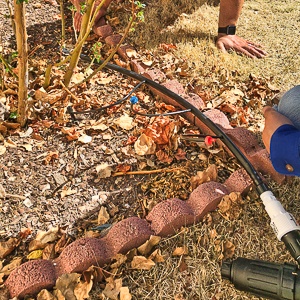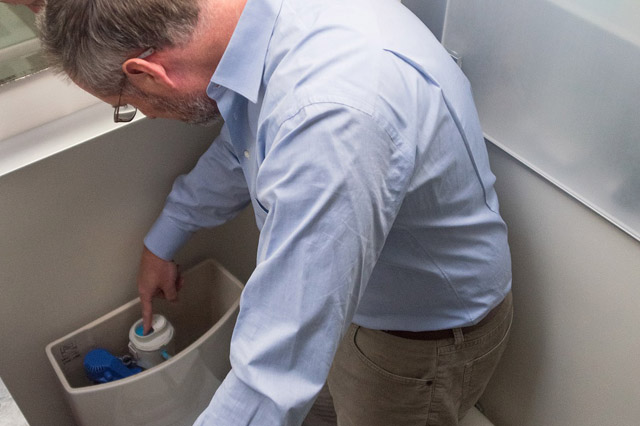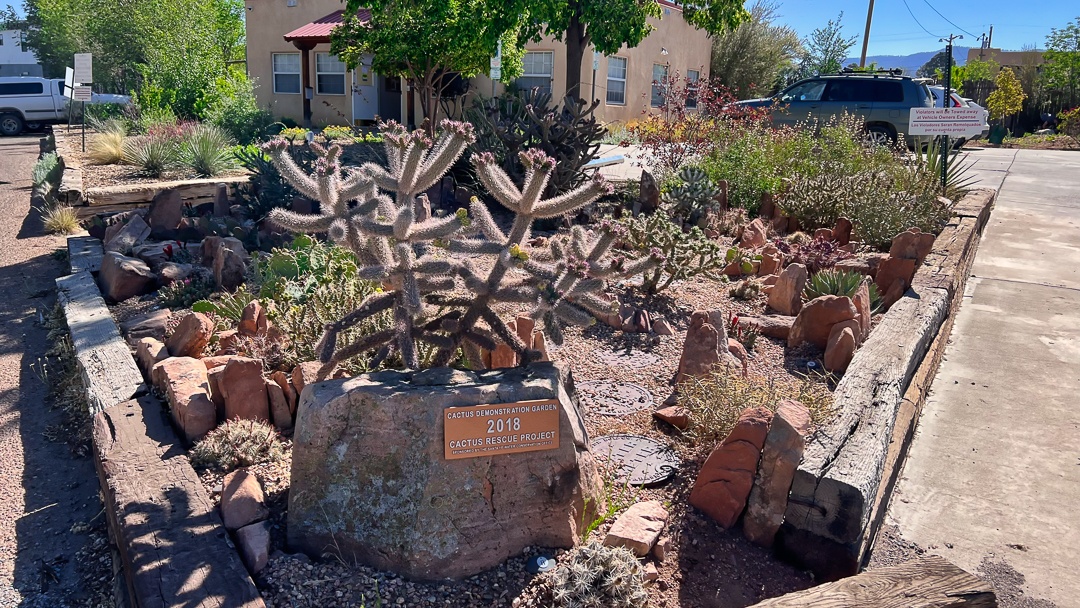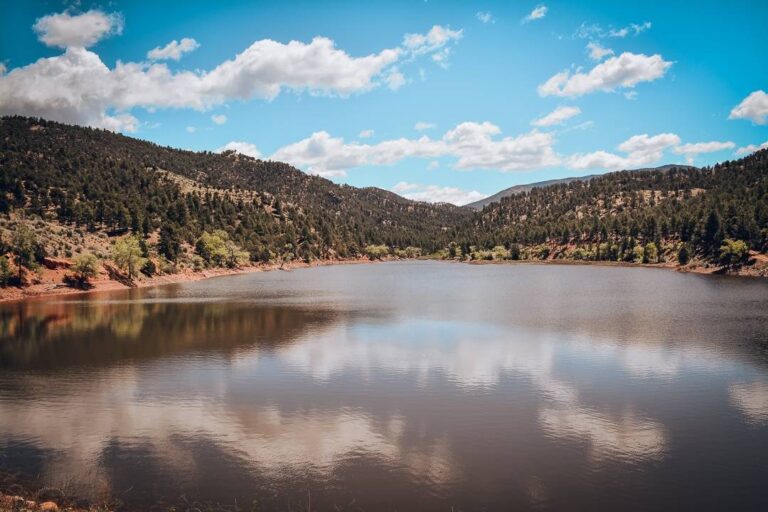Drip Irrigation for Maximum Efficiency

We all want to conserve precious water and the best way to do that in our landscape is a drip irrigation system. It’s the best way to try to deliver the right amount of water, and no more, at the right time and frequency. Unfortunately, we are dealing with two parts, the irrigation system and the landscape being irrigated, which change over time.
The irrigation system can change in various ways. Water emitters that worked fine last year might become clogged and deliver less water this year. Sometimes emitters go rogue and start sending out too much water. Emitters may still be watering plants that died over the winter. Leaks develop. End plugs can pop off. (A 4 Liter Per Hour (LPH) emitter should release about a 1 ½ cups of water in 5 minutes.)
The landscape might change also. A plant that needed a 4 LPH emitter last year may be bigger now and need an 8 or perhaps a 4 and a 2. New trees or large shrubs that needed 3 emitters located a foot from the trunk now may need 5 emitters located 3 feet from the trunk where the roots are now. Watering where there are no roots is water wasted. Some plants actually move over time. Maybe parts die and other parts prosper or, like iris and many others, they develop shoots away from the original ones. Some plants will continue by seeding themselves, in spots you have not irrigated.
It is estimated that during the summers in Santa Fe landscape watering uses about a third of the total water consumed. Of course, that is at a time of year when water is the scarcest. Leaks or watering dead plants simply wastes water. So too does using sprinklers except during times permitted, when serious evaporation is less likely.
The bottom line is that as good a system as drip irrigation may be, it is important that you take time in the spring, or more often, to inspect and update your system to make it as efficient as it can be.





